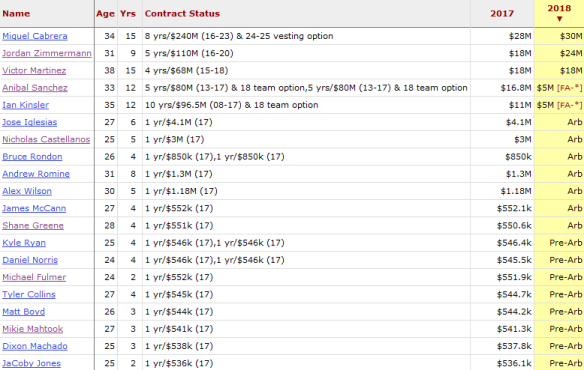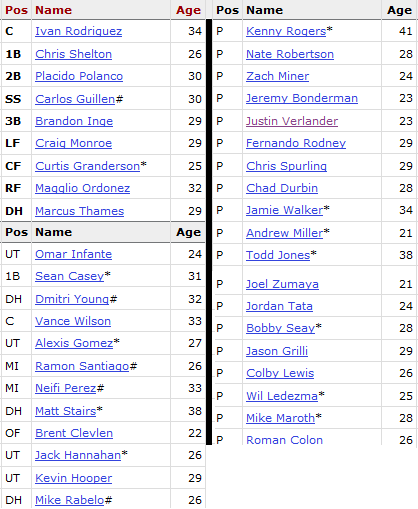Al Avila was busy yesterday. First, he traded Justin Upton to the Angels. Then, reportedly with seconds to go before the midnight waiver/postseason trade deadline, he traded Justin Verlander to the Astros. Through yesterday, Upton and Verlander were the 2017 team’s most valuable players according to bWAR. The Verlander Era– the 2006-2016 run of competitiveness– officially is over, and there can be no doubt that the Detroit Tigers are in full teardown mode. With that in mind, here‘s an updated look at the team’s 2018 financial situation:

With Verlander and Upton out, the top of that ledger is significantly lighter, and that trend is likely to continue into the offseason, when the team will trade Ian Kinsler and decline to exercise their option on Anibal Sanchez. They’ll still owe Verlander $8 million next year under the terms of the trade with Houston, and there will be raises due to a number of their arbitration-eligible players (Nicholas Castellanos likely being first among that cohort, followed by Jose Iglesias, Shane Greene, and perhaps Alex Wilson), but Detroit’s front office should be feeling much lighter on its feet. As I’ve mentioned again recently, there also should be a revenue bump from a new TV deal next year.
As Motown turns its increasingly lonely baseball eyes toward the future, where it will be incumbent upon Avila and his team to convert these more liquid resources into a new competitive core, let’s take another moment to look back at the really great era of Tigers baseball that began with Verlander’s first full MLB season in 2006. Here‘s the forty-man roster from that team, which represented the American League in the World Series that year (ages and positions shown for 2006 season):

Of this group, one is in the hall of fame (Ivan Rodriguez), and at least two are working in baseball broadcasting (Craig Monroe, FSD; Sean Casey, MLB Network). Only Verlander, Curtis Granderson (Dodgers), Fernando Rodney (Diamondbacks), Andrew Miller (Indians), and Jason Grilli (Blue Jays) still play in the majors, and Verlander was, by far, the last of the 2006 crew to leave Detroit.
You can read plenty about the prospect returns the Tigers received from yesterday’s trades elsewhere on the web. Here‘s an initial snapshot to get you started.
______________________________________________
Previously
It’s Over – 9/1
Upton There – 8/31
A bad time for a bad season – 8/29
Jordan Zimmermann takes tennis lessons – 8/20
Tigers Notes, 8/8/17 – 8/8
Decoding the Upton Myth – 8/2
Even the umpires just wanna go home – 7/21
Yo, a J.D. Martinez trade comp – 7/19
Martinez trade triggers premature referendum on Avila – 7/19
Michael Fulmer has righted the ship – 6/27
Tigers in Retrograde – 6/19
Fixing Justin Upton – 5/31
Soft in the Middle Now – 5/30
Reliever Relief, Part 2 – 5/11
Reliever Relief – 5/8
Related
ALDLAND’s full Justin Verlander archive
ALDLAND’s full Justin Upton archive
 I started writing about the Baseball Hall of Fame
I started writing about the Baseball Hall of Fame